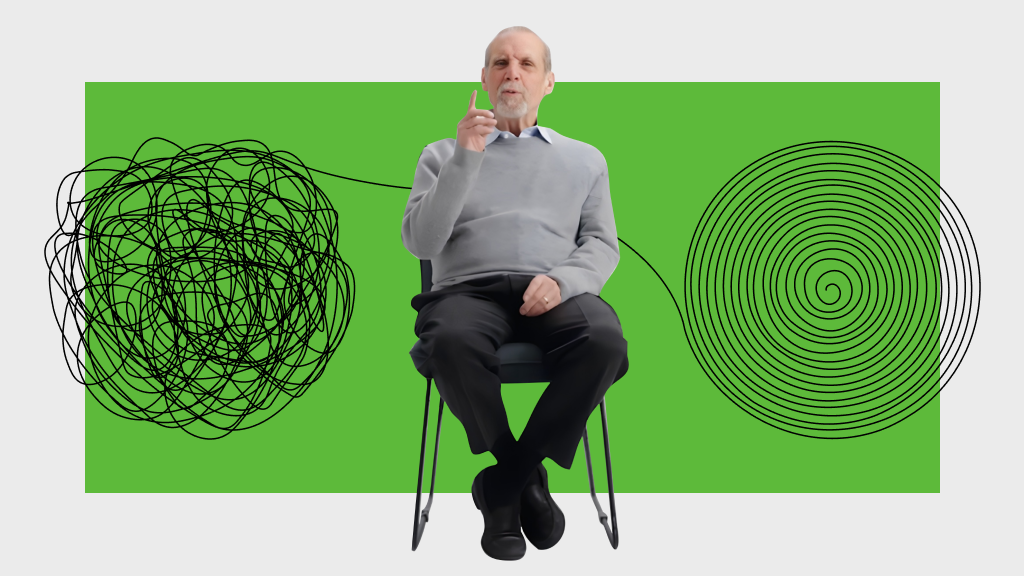How “distributed leadership” can help all companies navigate transformation

Credit: Stock28 / Adobe Stock
- New technologies designed to make business more efficient are actually making things more difficult in the short term.
- At the same time, distributed and hybrid working are transforming the human side of our businesses.
- To succeed in this new environment we should create a culture of “in-role CEOs” — and move from “command and control” to enablement.
As the already dizzying pace of the digital era continues to accelerate, many leaders have had to scramble to react. They often lag behind, having to grasp with known experience and the vastness of unknown knowledge and know-how beyond just the digital components of shifting business models.
For many, technologies such as generative artificial intelligence (GenAI), the distributed cloud, digital twins, 3D printing, the Internet of Things, and Blockchain, which are about making business more efficient, are making things more difficult in the short term. Some leaders “don’t know what they don’t know” and when they do, they become immobilized or delegate to someone with perceived competence. However, the modern business transformation must start with an active CEO and leadership team. Focused not just on the “what” needs to be done, but the “how to” implement. Why? Because the Strategy Implementation Institute tells us that 67% of all strategies fail in execution.
And yet, there is an equally big shift happening on the human side of our businesses: Distributed and hybrid working — a blended workforce increasingly made up of permanent employees and independent contractors — is becoming a more familiar model in forward-thinking organizations across small, medium and large enterprises, including the public sector. Even at the government level, many countries are looking at the best ways to attract the new “nomadic” talent making up parts of the independent workforce, to make the most of this high-value resource. It is perhaps a shame that many traditional businesses are not even thinking about it yet. The pace of this change is passing them by, leading to questions and urgency around how to attract and retain employees (too often with a 20th-century lens, rather than with an enlightened 21st-century approach, such as the blending of our workforces).

Treating symptoms while not understanding the root cause of workforce changes is becoming as important as digital transformation. This trend is not grasped as it should be by some HR leaders who are wrapped in traditional ways of structuring and not creating a new human capital framework that suits a blended workforce of this nature. The new range of “open talent” is viewed merely as managed services, separate from permanent employees, when it should be integrated and treated in a more holistic way.
New age of bold empowerment
To compete in this highly complex, fast-paced and competitive landscape, leaders need to understand how to develop and execute strategy in a digital world. This requires a holistic approach that is implementation-centered, with culture-building at its heart, with the customer in mind, and with a new age of bold empowerment to tap into the potential of the many. Relying on the few — or on a single leader — is simply not enough anymore.
An approach with the many comes at a time when the capability gap in our organizations, between top talent and independent contributors, is at its narrowest in history, and when we are all learning — and trying to master — new skills for a transformed digital world.
It is also a major diversity, equity and inclusion play. It must be, as everyone has the opportunity to contribute in their role or outside it, beyond a mere job description. This is why many organizations are now embracing looser job role definitions and requirements, to encourage in-role thinking, innovation and decision-making, supported strongly by line management, rather than merely a system of supervisors. Chasing short-term numbers and aims, rather than a wider role of growing the business through growing our people, is no longer enough.
In my book, Unleash the Inner CEO: Make distributed leadership a reality, I provide the frameworks, templates and models for how to get this done. Starting with the all-important mindset shift at the senior executive level, through to the organizational structure and cultural changes that need to be locked in place before anyone can be truly empowered. This includes the onboarding of first-line leaders and line managers in creating a psychologically safe environment suited to unleashing the power of the many. One that embraces experimentation, iteration, coaching support and building a “new skills bench” across the business.
In-role CEOs
The “inner CEO” concept represents the untapped potential within individual contributors to innovate, generate ideas, and act beyond their job descriptions without needing approval. Collaborating across all levels and peer groups enhances overall effectiveness and productivity in this modern age. Individuals are now expected not just to excel in their specific roles but also to make a strategic impact on the organization.
“In-role CEOs” are those who have recognized and unleashed this potential, empowering themselves (as much as being empowered by the organization) to lead beyond their primary responsibilities. Encouraging individuals at all levels to embody their inner CEO creates a workforce marked by empowerment, supported by revised management structures and a leadership style shifting from command-and-control to enablement.
Executive leaders, HR professionals, managers, and individual contributors all share responsibility for realizing this potential. Executive leaders foster a culture of empowerment and trust, backed by a supportive board. HR professionals and managers are instrumental in cultivating this culture and supporting individuals in embracing their inner CEO. Individual contributors, on their part, assume responsibility and accountability for successful execution, with strong support from management throughout the process.
A light-touch hierarchy
A great example of an organization getting this right is Brazilian investment management company, SEMCO Partners. Under CEO Ricardo Semler’s guidance, SEMCO transformed its operational ethos. Employees enjoy flexible work timings, participate in selecting their supervisors, and even have a say in their compensation. They’re also encouraged to customize their work environments. In some ways, SEMCO excels at “leadership without levels.” This is not to say there is no hierarchy. There is. But it is a light-touch hierarchy, and that is a very supportive and motivational environment for individual contributors to embrace. And it’s strongly supported by line managers who are constantly improving themselves to be more attractive (and value-adding) to employees within and outside of their function. This means traditional functional verticals start to simplify, with greater horizontal value added.
The key at SEMCO Partners is a reduction in the the operational leadership and managerial activities of the past, allowing more time to focus on the larger, strategic transformation initiatives that the business, its board and its customer demand. It’s a win for everyone in the organization, especially when supported strongly by repurposed line management who can be coaches, guides and resources to help everyone contribute and succeed together. Everyone has a stake, in the organization.
The evidence exists and is, to some extent, still evolving. Embracing distributed leadership, horizontal management, and a genuinely empowered workforce necessitates an experimental outlook. We are currently in a period of change that emphasizes participation from the many, not just a select few. To make this happen, leaders should first look at the organizational and executive changes that need to be in place. Then, they should address how to equip individuals in their journey to becoming contributing in-role CEOs.





